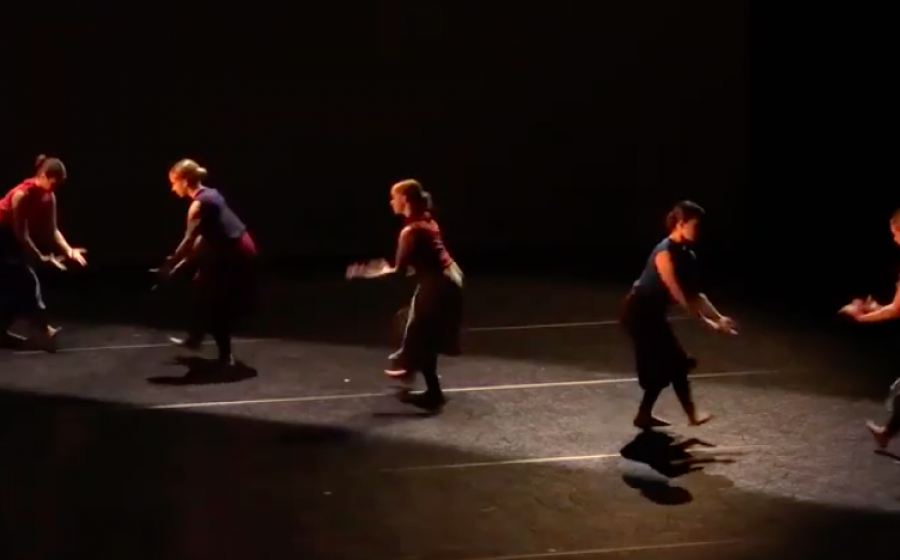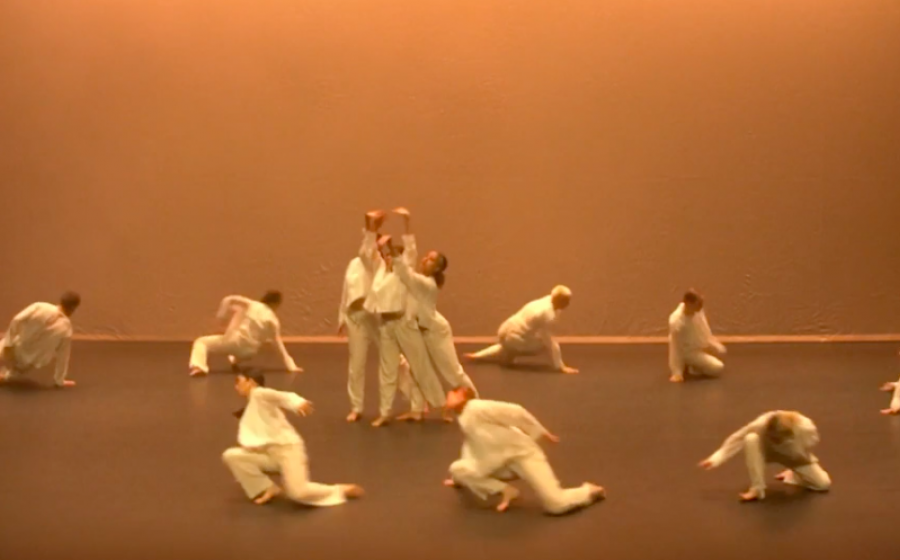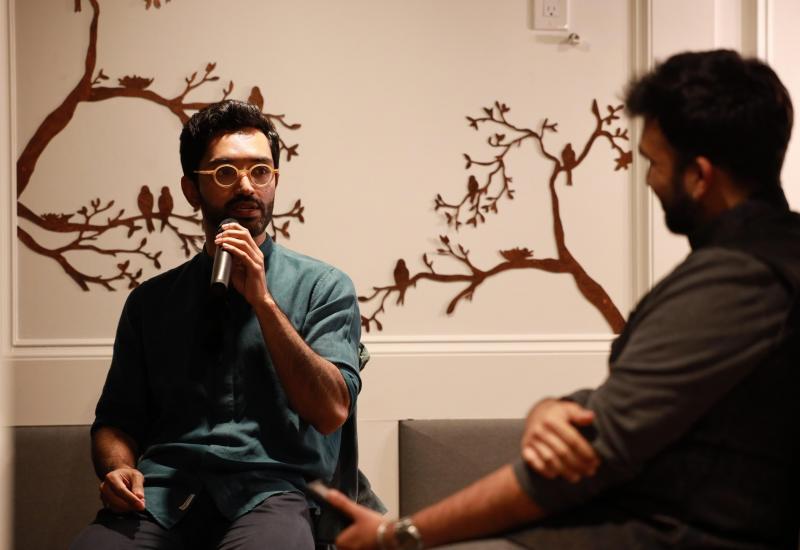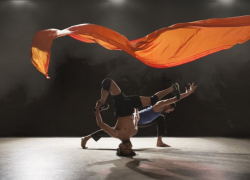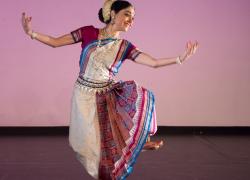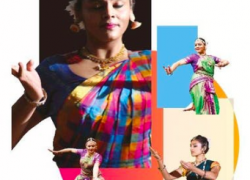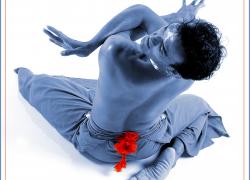Making Inroads
Images: Screenshots taken from the works. Links below.
The end of the 2021 academic year at dance conservatoires has given opportunities to two South Asian dancer/choreographers to make new works for the dance schools’ final year performances. Vidya Patel was invited by Rambert School of Ballet and Contemporary Dance and Divya Kasturi by Trinity Laban, to choreograph on their students alongside names such as Richard Alston and Charles Linehan.
To link these overtures as responses to the Black Lives Matter protests that followed in the wake of the murder of George Floyd could sound crass, but it cannot be denied that the reality of historic and systemic racism has hit British institutions. We are seeing moves by the dance sector to acknowledge movement systems that come from non-European traditions. Recently London Contemporary Dance School announced that they had ‘decolonised their curriculum’. Without having probed more deeply into this statement, what can be said is that their three-year BA degree course will now include classes in kathak and hip-hop. The inclusion of South Asian choreographers by Britain’s top dance schools is welcomed.
Diyva Kasturi has created Sleepless, based on a Tamil poem of the Sangam period. Divya draws parallels with the feelings of uncertainty and restlessness that surfaced over the Covid period. The choreographer has drawn on many elements of bharatanatyam, including recitations of jattis layered with multiple voices, highlighted details of hastas and footwork by effective lighting, and short movement sequences. There are also sections where contemporary-based movements come to the fore. It has to be said that the bharatanatyam nritta is executed by the students new to the form with relative fluency and finesse. The overall effect has integration and harmony although the piece does not particularly throw light on the phenomenon of ‘sleeplessness’.
Vidya Patel’s Hey Honey explores the life and the collective activities of bees. Bookended by a tableau of a body laid out (presumably the dead Queen Bee) with the members paying their respect, the sections of dance are skilfully woven with imagery of constant labour: swooping, diving, gathering, dispersing circling, flying, landing with changing group formations, easy on the eye. Bathed in a yellow light of pollen and a lush music score, the elements unite to create a piece that is pleasing to the senses. Hey Honey is an impressive piece from a young choreographer.
I was able to do short interviews with both choreographers to find out more about the creative process:
Divya Kasturi
How did the commission come about?
It was my association with Stephanie Schober at the Dance Department of Trinity Laban for whom I had given Bharatanatyam workshops in 2019 and 2020.
How long did you have with the students?
It was roughly about 35-40 hours including technical times in the Laban Theatre. This was spread over a month. We also had two differents sets of casts and had to make the ‘same’ piece for both the casts!
I chose to work with them being ‘socially-distanced’ which was tricky and challenging. More than anything else – the constant change in headcounts due to self-isolations.
How did you select the concept?
I have been attending some sessions by Professor Dr. Raghuraman (India) curated by Deepa Ganesh (Upasana Arts) and one of those was on ‘Sangam’ Poems. These Tamil poems are soaked in expressing emotions. I felt really connected with a ‘Kurunthogai’ poem (no. 6) that is to do with 'sleeplessness' & ‘waiting’. It was so relevant considering my pandemic-mode-everyday life waking up at odd hours and working erratically. What started as a casual trigger slowly started to ‘brew’ inside and Upsana Arts (Deepa Ganesh) mentioned she would be curating a virtual festival (Ojas-Sangam Festival) enabling a handful of us artists to delve deeper into the world of ‘sangam’.
How important was it for you to pass on some elements of bharatanatyam to the students?
Born and brought-up in Chennai, bharatanatyam (BN) is my ‘mother-tongue’, so how could I not share bharatanatyam? It is so much part of me, my sense & sensibility, thinking and ‘doing’.
Everything that I do will always have that ‘BN-flavour’. In this instance, I think I was enjoying the process of being able to share ‘my practice’. I had been invited to teach BN technique to The Place’s 1st & 2nd years in March/ April 2021. So it was about continuing to ‘share my practice’. It felt organic and I haven’t even thought of it as ‘elements’ of BN as all of it was always a part of my work.
Over all these years and especially since the lockdown I have been able to delve deeper into my practice, questioning it, grappling with it, wrestling with it, sometimes indulging in it obsessively! I’ve been doing the ‘Navarasa Sadhana’ intensives with the revered Venu-Ji (Koodiyaattam exponent) alongside continuous practice/coaching with Mavin Khoo.
What are you most proud of in this commission?
It was challenging & a huge-learning on multiple levels. Dealing with two different casts was tricky and I had to be constantly aware of and alert to their mental & physical strengths. Every decision I made had to be weighed against a lot of issues.
The sections using the face/eyes was very new to the students. Although I had only few ‘do’ it live, I ensured everyone experienced the technique.
Pushing the students towards understanding basics of ‘narratives’, expressive aesthetics and the ‘rigour’ in practice was an extremely rewarding experience. It has indeed been a huge endeavour of sharing a Tamil Sangam poem to western contemporary dance students.
How has working on Sleepless with the Laban students pushed you as a choreographer?
My dance practice draws from creative disciplines and experiences such as dance (BN, kathak & Western Contemporary), music, theatre, film and technology. I was able to share all of these aspects with the students.
The performance inclusive was part of their assessment. So I had to assess and mark them for their involvement throughout the process.
I had to feed, ignite and introduce them to a new aesthetic; it was a combination of making them ‘learn’ new techniques as well as in-so-doing organically enable a ‘choreography’ therein that was drawn from their artistic sensibilities as well.
I was constantly finding new ways of creating a shared, mutually-derived lexicon to movements & choreography. So it was a double-fold engagement – almost like a workshop plus choreography yoked within each other.
The great feedback received makes it meaningful and more so I am extremely delighted to have been invited back again for 2022!
Vidya Patel
How did the commission come about?
The commission was offered by Rambert School as a joint proposal with Conor Scott, an alumnus of Rambert and a friend and collaborator whom I’d met during the BBC Young Dancer 2015 competition. We had worked together on About the Elephant (Serendipity Festival and Sampad Arts). We asked if we could split the commission, however, since we were in two different countries.
How long did you have with the students?
I had five days with the twelve students and one afternoon of tech time, which required a lot of planning.
Shammi Pithia created a magical original score which featured cellist Midori and vocalist Fahreen Virani. The full structure was made before going into creation. Knowing this was going to be premiered at the Royal Opera House I wanted to make sure sound played a big part. The twelve students I worked with are outstanding movers and I wanted to bring out their individuality in the piece too.
How did you select the concept?
Hey Honey draws inspiration from the life of honeybees, their social interactions and symbolic references within folklore, mythology and religion across the world relating to birth, death, life cycles, divine femininity and nature as well as spiritual beliefs using analogies of honeybees.
How important was it for you to pass on some elements of kathak to the students?
For me it was important but I had to think carefully about when this was introduced and for what reason. On day three I invited Nirmal Chohan, tabla player, to accompany us for class where I had told them I would be leading them through a kathak class and Nirmal also gave a brief overview of tabla and its association with kathak. It was important to communicate that the kathak form is part of my training therefore it will influence this choreography.
What are you most proud of in this commission?
This commission pushed me out of my comfort zone in many ways, especially coming out of a pandemic. The entire week seeing them during creation and running through the piece in full energy with their masks on was very inspiring.
l am proud of myself for having achieved this: it was my first time working with a cast of twelve dancers, being commissioned by a conservatoire to make work for their students, knowing it was premiering at the Royal Opera House. I think it all came together really nicely and was very thankful to Darren, and Amanda from Rambert School for trusting me with this commission.
How has working on Hey Honey with Rambert students pushed you as a choreographer?
The Rambert students were so quick in taking on instructions and tasks! I was totally inspired with the movement vocabulary that came from their ballet and contemporary training and really wanted to use their strengths for this piece! Working with the students of Rambert gave me an opportunity to see myself leading in an environment I hadn't experienced during my training and was self affirming in my skills that I had unknowingly learnt whilst working as a dance artist.
I really thank all the choreographers, artists, mentors that I've worked with, especially Richard Alston, Gary Clarke (The Troth), Hetain Patel and more.
Watch here;
Sleepless (Laban) Cast 1 | Cast 2
Hey Honey (Rambert)
Coming Up: Divya Kasturi To Varnam with Love @ThePlace on Thursday 30 September 7.30 pm
Details & Booking here

